

Max Davies
2025 Toyota Corolla SX review
6 Days Ago
The Toyota Fortuner is basically a HiLux SUV, though it gets smacked in the sales race by its Prado stablemate. Does the 2021 update make it a better bet than before?
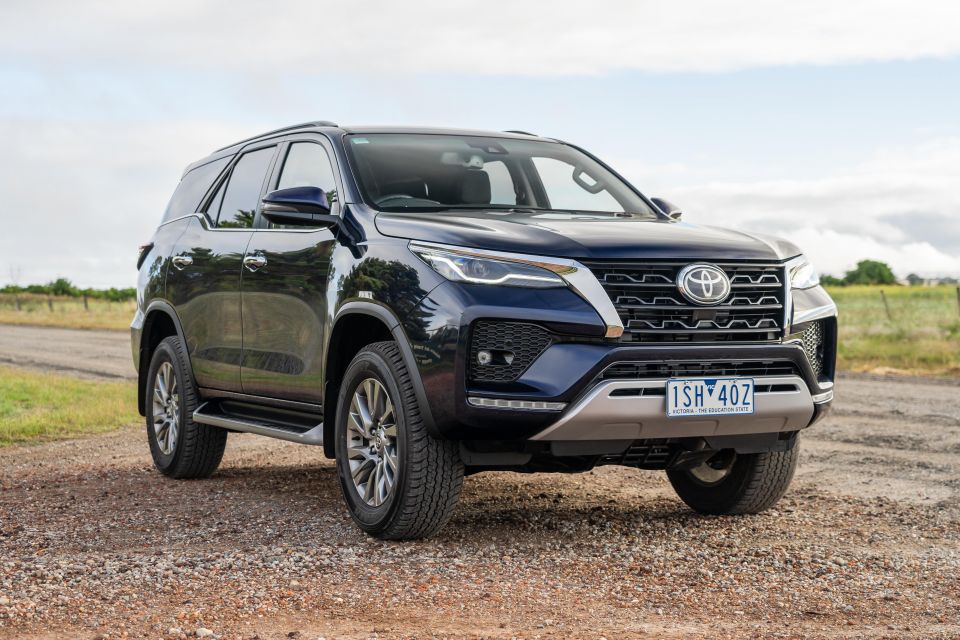
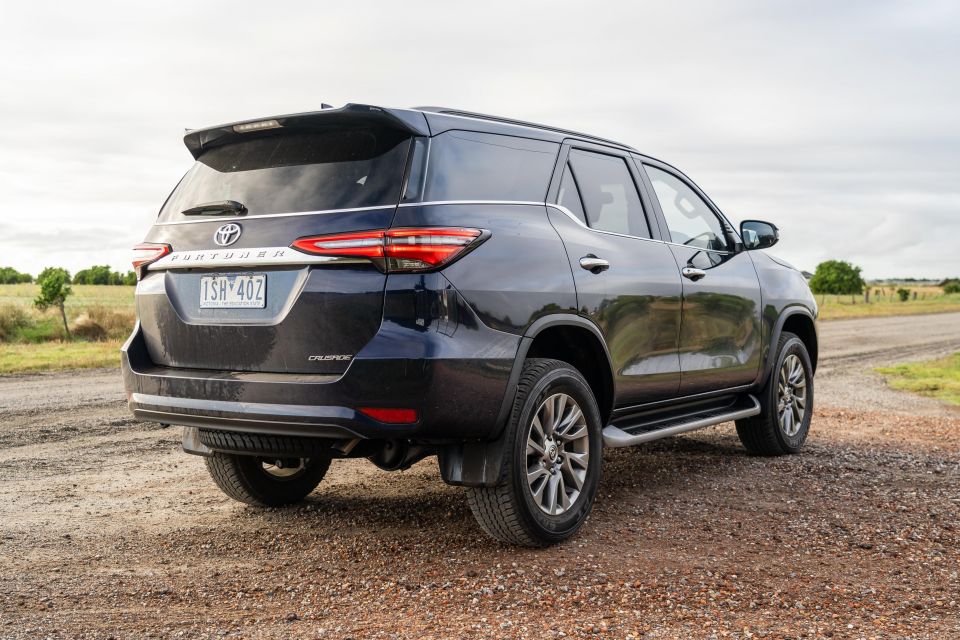

Senior Contributor
New from
$49,080
excl. on-roads

Senior Contributor
New from
$49,080
excl. on-roads


Senior Contributor
New from
$49,080
excl. on-roads

Senior Contributor
New from
$49,080
excl. on-roads
Quickly see how this car stacks up against its competition. Select any benchmark to see more details.
Where expert car reviews meet expert car buying – CarExpert gives you trusted advice, personalised service and real savings on your next new car.
A HiLux-based SUV spinoff should be an obvious sales home run, yet the Toyota Fortuner hasn’t really caught on since first hitting these shores in 2015.
That’s probably because Toyota’s dealers prefer to talk prospective buyers into a larger and pricier Prado, which last year outsold the Fortuner by a ratio of 6:1.
That being said, the 2021 Toyota Fortuner sports a number of worthwhile upgrades, introduced last August. It’s more powerful than before, has lighter steering in urban conditions, can tow a heavier load, and gets a better touchscreen.

In the words of Toyota Australia’s vice president Sean Hanley:
“Our continual improvement of vehicles ensures Fortuner will thrive in Australia’s harsh environments as a diesel alternative to Kluger and an affordable choice for those who aspire to own a LandCruiser.”
Does this claim hold water?
The 2021 Toyota Fortuner range kicks off at $49,080 before on-road costs for the GX variant, climbing to $54,350 for the mid-level GXL spec. These list prices equate to drive-away prices of about $54,000 and $59,500 respectively.
But the version we are driving here is the range-topping Fortuner Crusade, which costs $61,410 before on-road costs, equal to about $67,000 drive-away. This means the top-of-the-range Fortuner costs about the same on the road as a base-level Prado GX.
As the time of writing, the drive-away price for a Fortuner Crusade was about the same as that of a Ford Everest Trend Bi-Turbo. Other major competitors are the Mitsubishi Pajero Sport Exceed ($60,990) and Isuzu MU-X LS-T ($54,990) – both drive-away campaign prices.
So, while the Fortuner’s entry price looks like an affordable way to get the coveted Toyota badge on your 4×4, the Crusade flagship wears a premium over some pretty solid competitors.
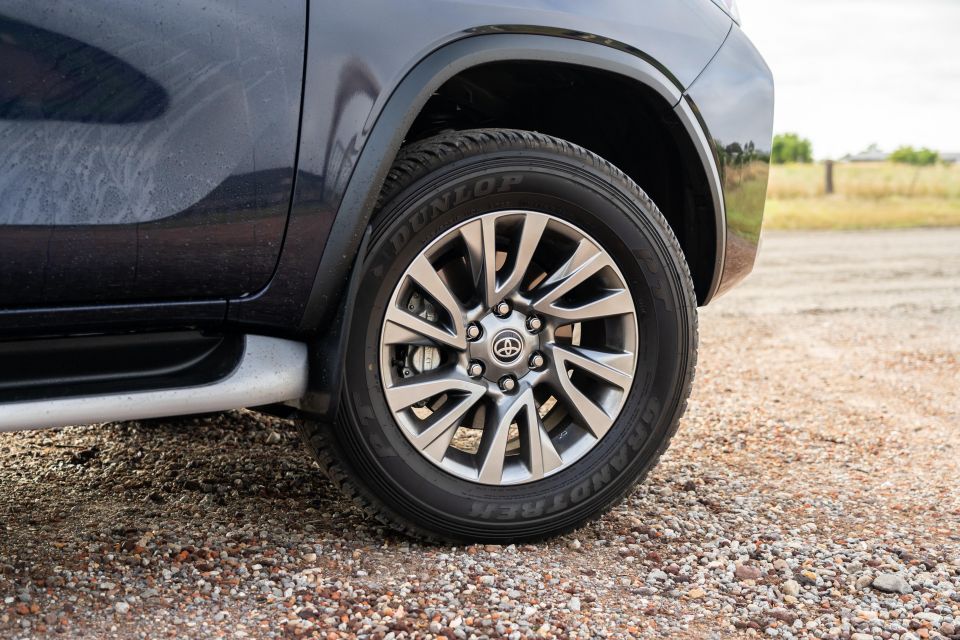
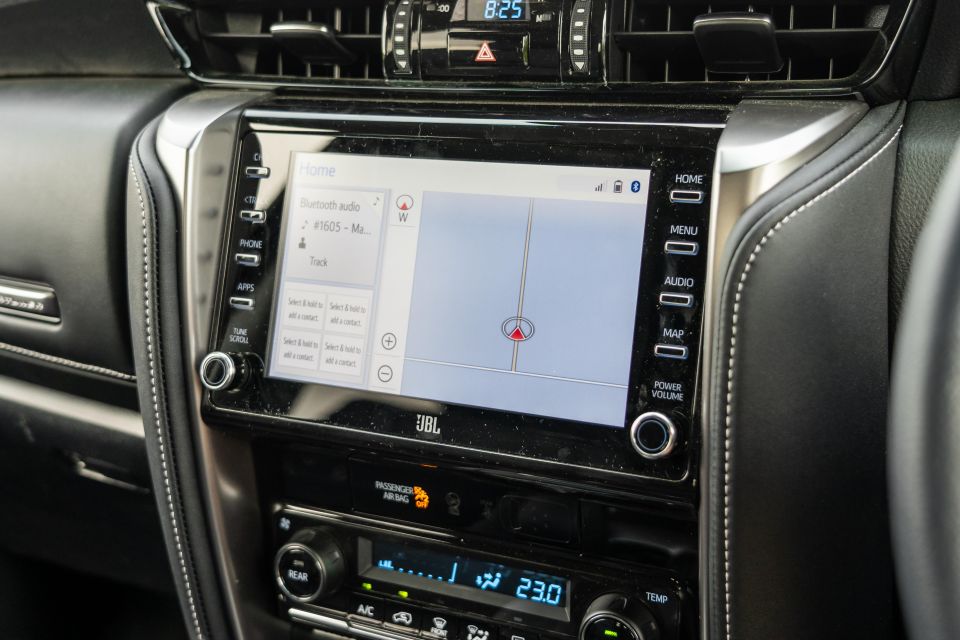
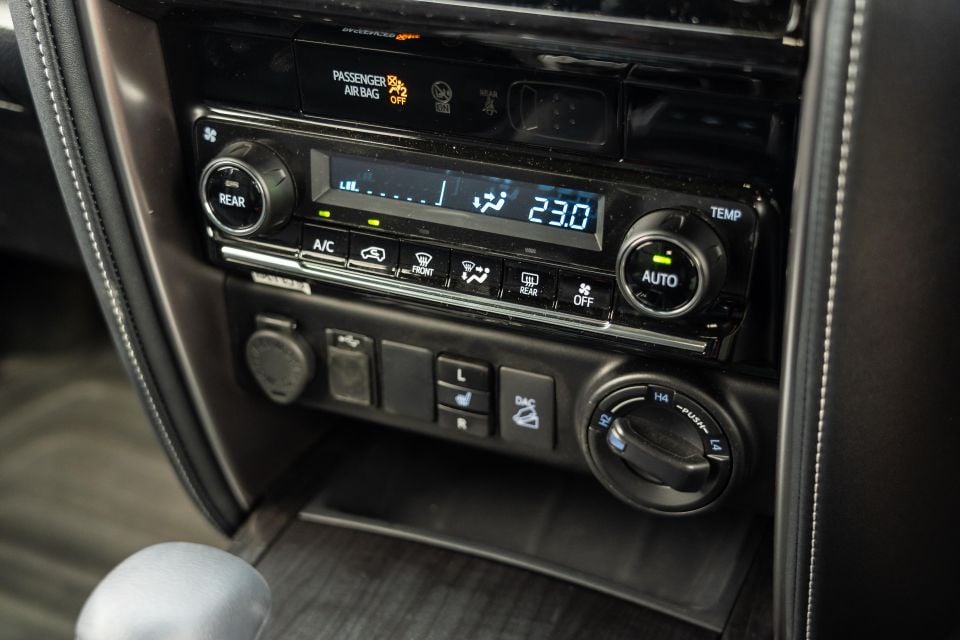
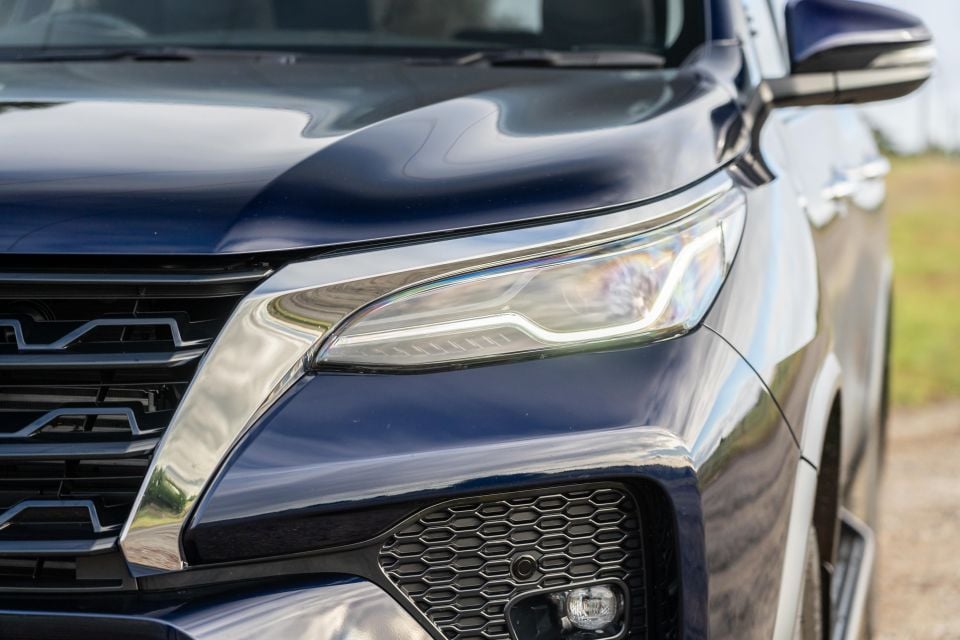
Buy your new car without the stress. It's fast, simple and completely free.

Great service from Travis and team, second time I have used this business would not hesitate to recommend them to anyone
Craig C.
Purchased a Ford Ranger in Sunshine Coast, QLD
CarExpert helped Craig save $7,224 on his Ford Ranger, now let us save you on your next new car.
Get your BEST priceAll Toyota Fortuner grades come with alloy wheels, a full-size underbody spare, automatic bi-LED headlights, side steps, three 12V sockets, just the one USB, two-row A/C vents, an 8.0-inch touchscreen, Bluetooth, Apple CarPlay, Android Auto, and a reversing camera.
The GXL adds rear privacy glass, chromed door handles, roof rails, LED fog lights, automatic climate control, proximity key access, paddle-shifters, satellite navigation, and digital radio.
Above this the Crusade version adds larger-diameter alloy wheels (18-inch instead of 17-inch), leather seats with heating for the front occupants, an automated tailgate, electro-chromatic rear-view mirror, a 220V plug, and an uprated 11-speaker JBL sound system.
MORE: 2021 Toyota Fortuner pricing and specs
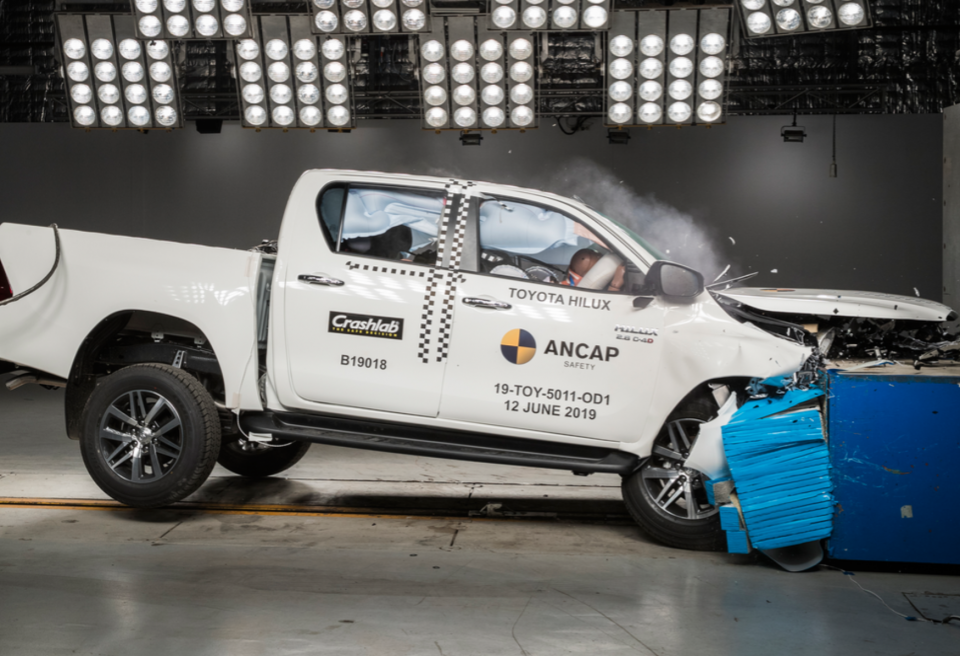
Standard safety features across the range include seven airbags, middle-row child-seat attachment points, autonomous emergency braking (AEB) that can detect pedestrians and cyclists, lane-departure alert, road-sign assist, and active cruise control.
There’s no active steering assist function for the lane-departure alert system, nor is there blind-spot monitoring or rear cross-traffic alert.
Crash-tester ANCAP updated its Fortuner rating to a 2019 date-stamped five-star score, awarding it 95 per cent for adult occupant protection, 84 per cent for child occupant protection, 88 per cent for vulnerable road user protection, and 78 per cent for active safety assist.
Interestingly, ANCAP did not crash a Fortuner, but instead re-used technical information from the HiLux crash test, such are the similarities between the pair.
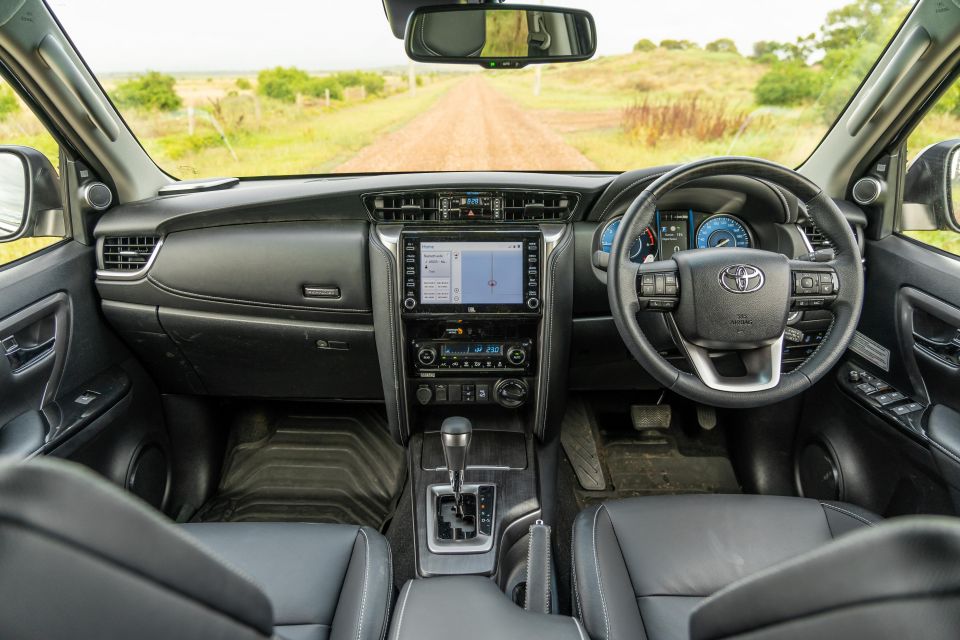
There are plenty of HiLux bits inside, from the telescopically-adjustable steering wheel with carried-over buttons and stalks, to the gear shifter, 4×4 dial, climate control cluster, centre screen, front tweeters near each side mirror, and A-pillar grab handles.
But there are also some differences. The screen is more nicely integrated into the dash in this application, and is flanked by padded knee inserts. There’s also a padded instrument binnacle cover, blue analogue gauges, moved drive-mode buttons, and a padded upper glovebox cover.
In typical Toyota fashion it’s all built without obvious flaw, imparting a feeling of solidity and quality. It doesn’t totally shed its utilitarian roots, but you do get some pampering squishy contact points and rock solid switchgear.
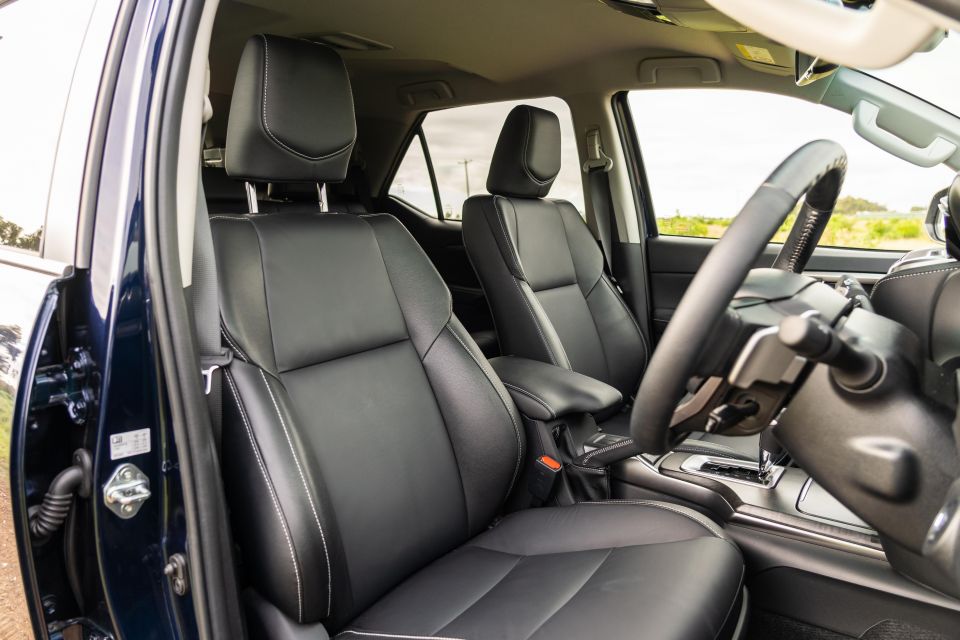
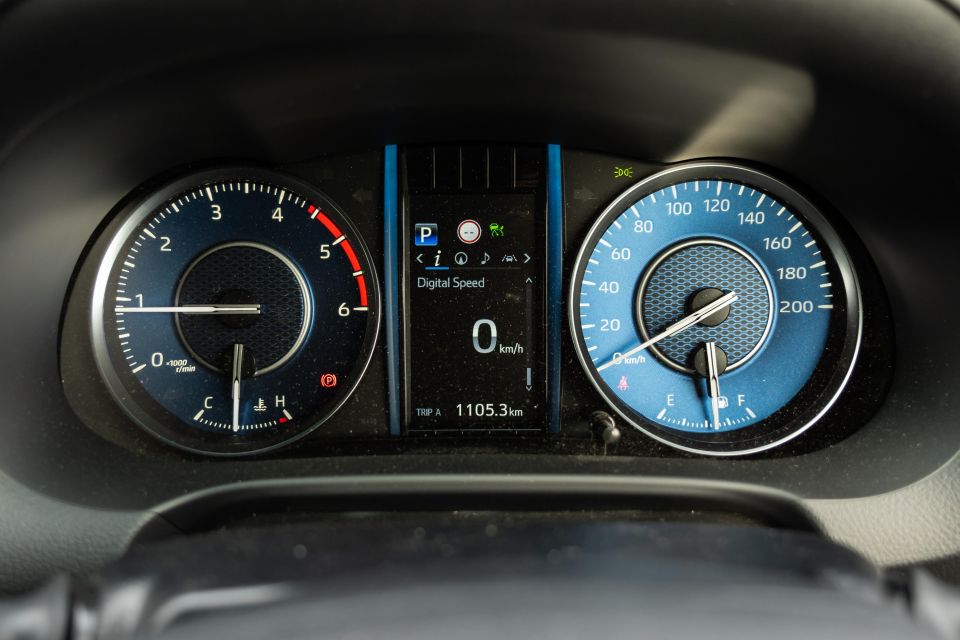
Whether the dark woodgrain trim on the wheel and dust-prone glossy black inserts all over the fascia are appealing to you is a matter of taste.
There are two gloveboxes, super handy pull-out cupholders near each outboard vent, a decent centre console, and bottle-ready door bins.
The touchscreen-based infotainment system with button shortcuts doesn’t feel particularly cutting edge, but it’s stable and offers both navigation and phone mirroring or streaming. The JBL sound system is fine, though it’s not the most refined vehicle on sale.
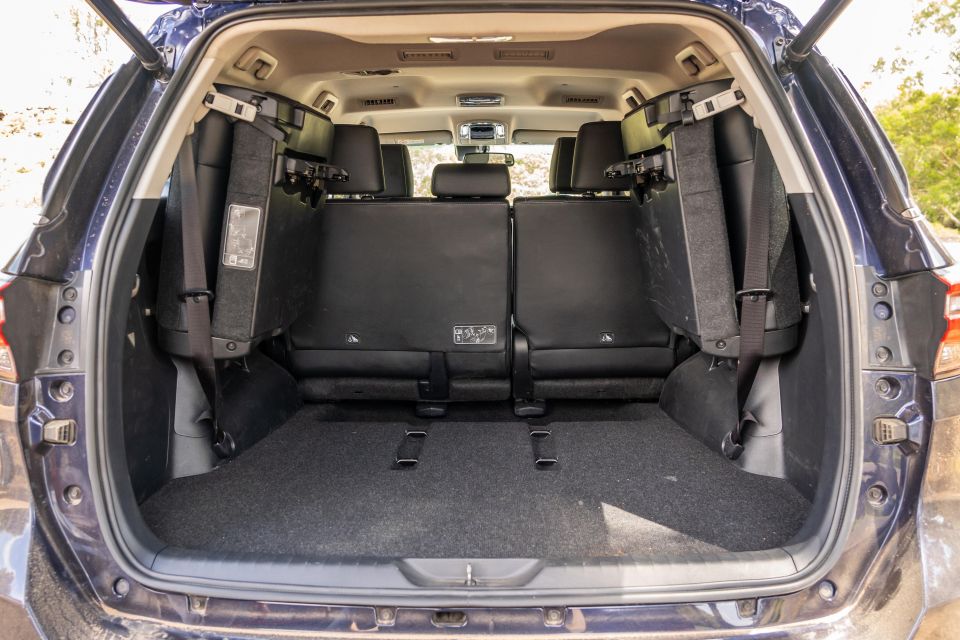
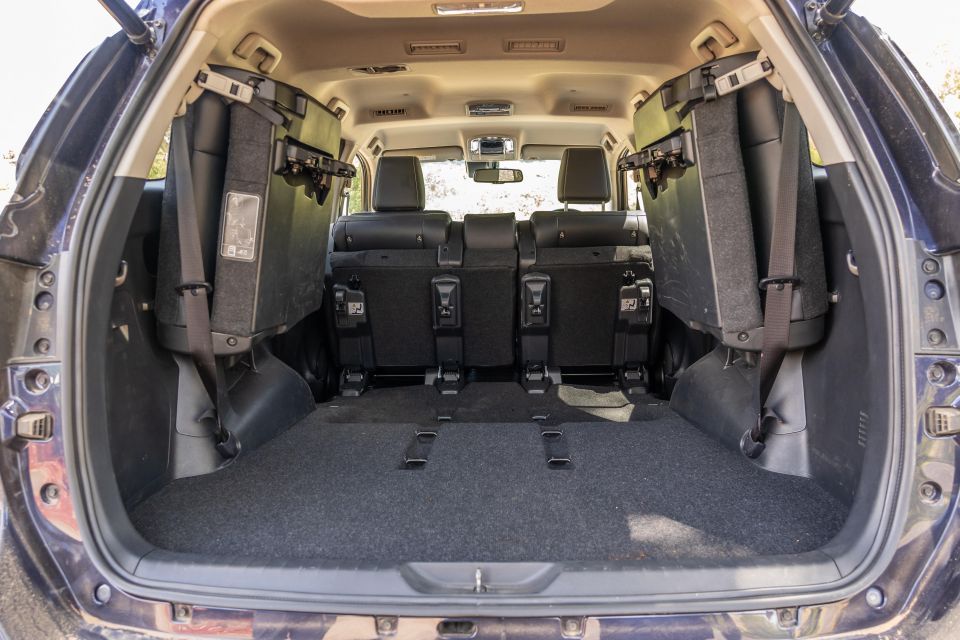
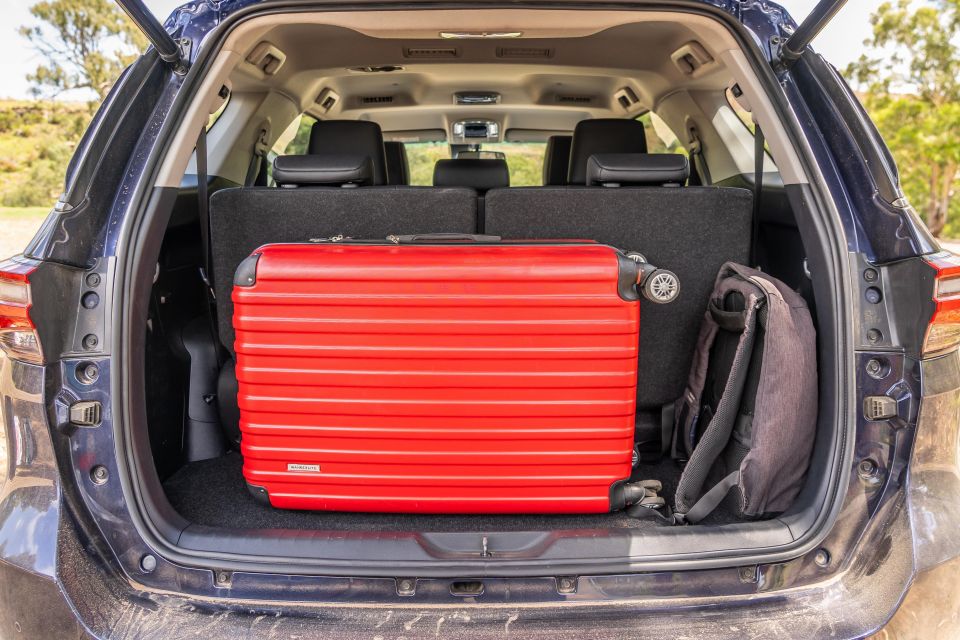
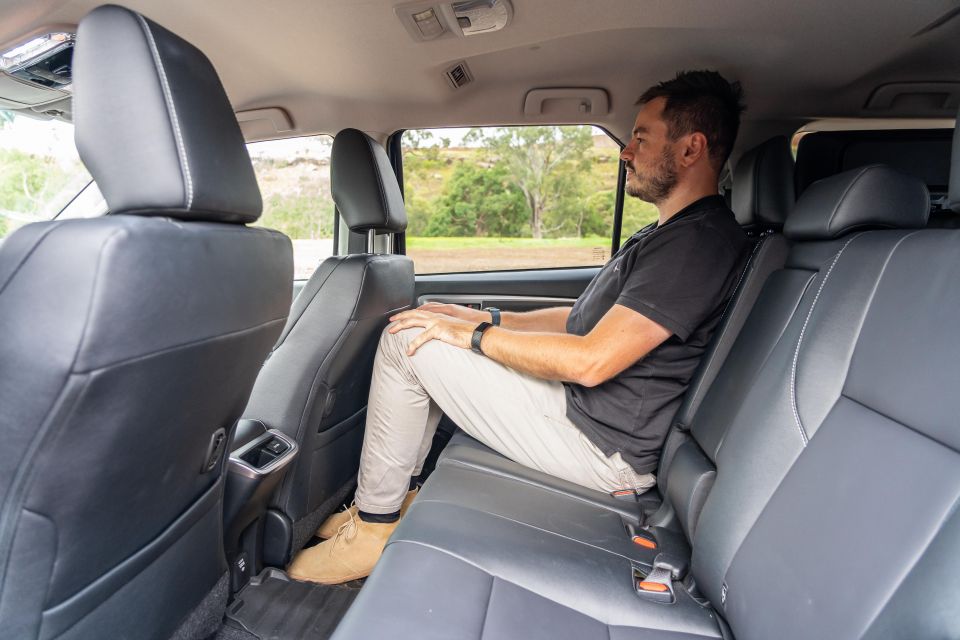
There’s plenty of legroom in the tip-and-tumble second row for even someone my height (194cm), though headroom and toe-room are a bit tighter than I’d like. The back bench splits 60:40, and slides and reclines.
Middle-row occupants get air vents in the roof, cup holders, coat hook, foldable grab handles (unlike the HiLux), and both 12V and 220V sockets.
The third seating row is best used by kids on an occasional basis, though it’s a handy option to have.
But Toyota’s solution for stowing these back seats away is quite clumsy compared to competitor vehicles, where said seats neatly fold flat above the floor. You pull each folded back seat up from its base and attach it to the roof, covering each rear-side window.
This system reminds me of 1990s Nissan Patrols, since every competitor vehicle today uses a more elegant and space-efficient solution. It’s also a mild pain to remove the seats entirely, if you were considering that as a backup.
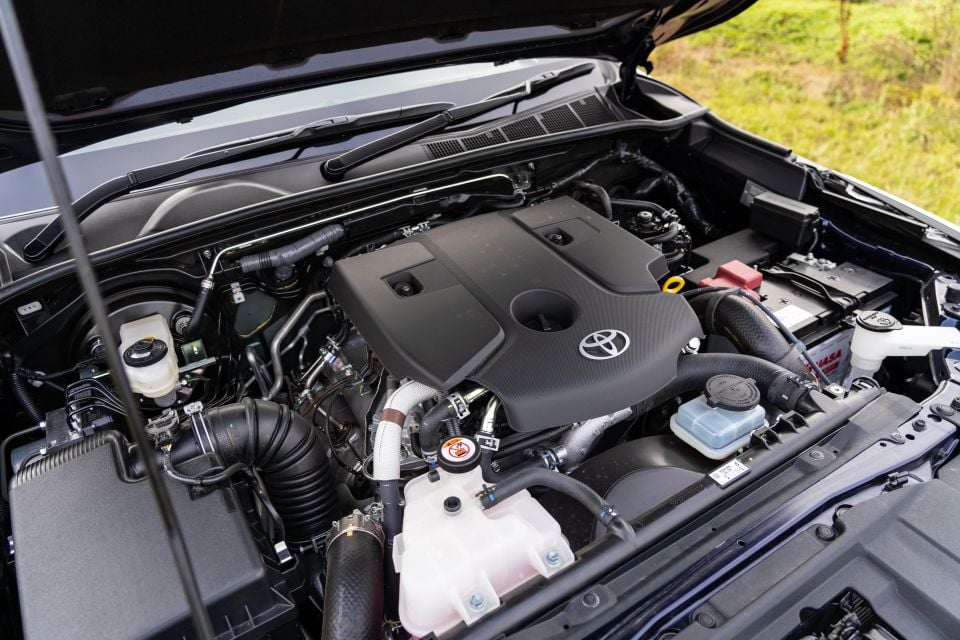
An upgraded 2.8-litre four-cylinder turbo-diesel engine putting out 20kW and 50Nm more than the 2019 model. This engine makes 150kW of power at 3400rpm and 500Nm between 1600 and 2800rpm. It’s mated to a six-speed automatic transmission with paddles.
The driveline is a switchable four-wheel drive system with high- and low-range 4×4, plus a locking rear differential. There are also three driving modes controlled by buttons that change the throttle response. It’s more immediately responsive in Sport.
Toyota also claims the fuel use has been cut by nearly 12 per cent, to a combined-cycle claim of 7.6 litres per 100km. With an 80L fuel tank, the theoretical range exceeds 1000km. I averaged 8.6L/100km on my loop.
The more powerful and torque-y engine has allowed a 300kg increase to the braked-trailer towing capacity, to 3.1 tonnes – 400kg less than the HiLux.
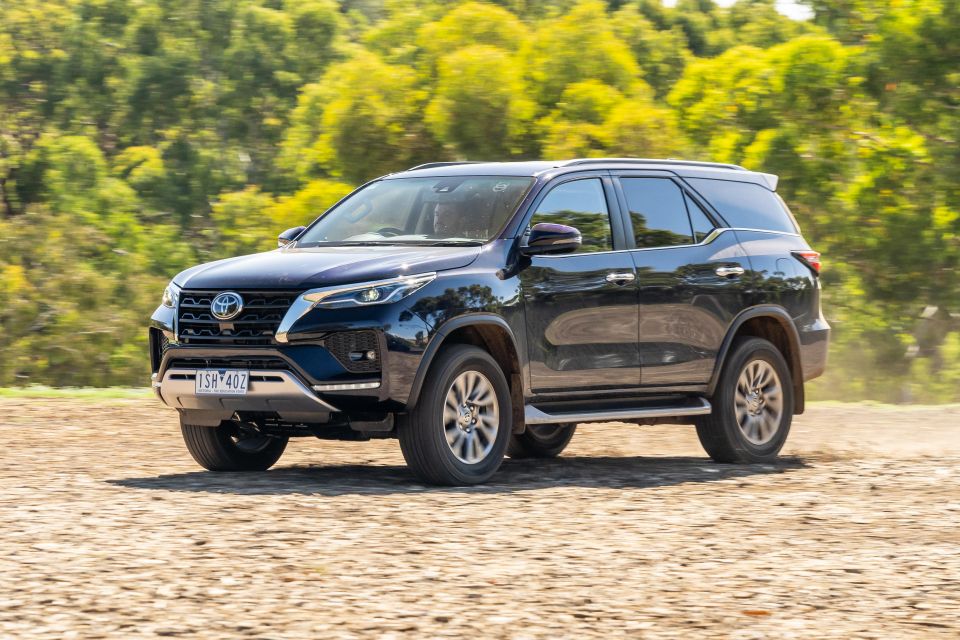
The new engine is a definite improvement, with plenty of punch off the line – especially in Sport mode – and a tonne of torque available just off idle point. It’s also respectably refined for a commercial diesel.
While there are ‘only’ six forward gears, the wide torque band means it need not shuffle between ratios too much. At a digital speedo-indicated 100km/h on a highway, you can expect the tacho to display 1600rpm.
As per the HiLux, it also offers good engine braking and smooth throttle-off crawling down hills, and if that’s not sufficient there’s both reduction gearing and a hill-descent control system.
The main technical change beyond the engine is the (still-hydraulic) steering, which sports a new variable-flow pump that offers more assistance at lower speeds, making it feel more wieldy in town – though it’s not as light as an Everest’s electrically-assisted steering.
The unchanged suspension comprises double wishbones up front, and in place of the HiLux’s rear leaf suspension the Fortuner sports coils with five links per wheel, shocks and a stabiliser bar.
The lighter steering is most welcome, but Toyota could have tweaked the ride too. The Fortuner soaks up bumps well enough, but it feels a little jiggly and fidgety over corrugations. A little softening wouldn’t go astray.
Braking is handled by sizeable 338mm ventilated discs at the front and 312mm ventilated discs at the rear (the HiLux still uses drums by contrast), which pulls in the 2155kg Crusade well enough. In Toyota fashion, the stability control is nicely tuned and doesn’t cut off torque abruptly.

The GX and GXL Fortuners have all-terrain tyres, whereas this Crusade runs highway tyres. That probably says a bit about the projected buyer.
Off-road, you have an approach angle of 29 degrees, departure angle of 25 degrees, a breakover angle of 23.5 degrees, 216mm of running ground clearance, and 700mm of wading depth without a snorkel.
You might be curious to know how the Fortuner fares off-road. Our off-road editor Simon Christie is working on a much more detailed off-road review that’ll be published shortly, so stay tuned.
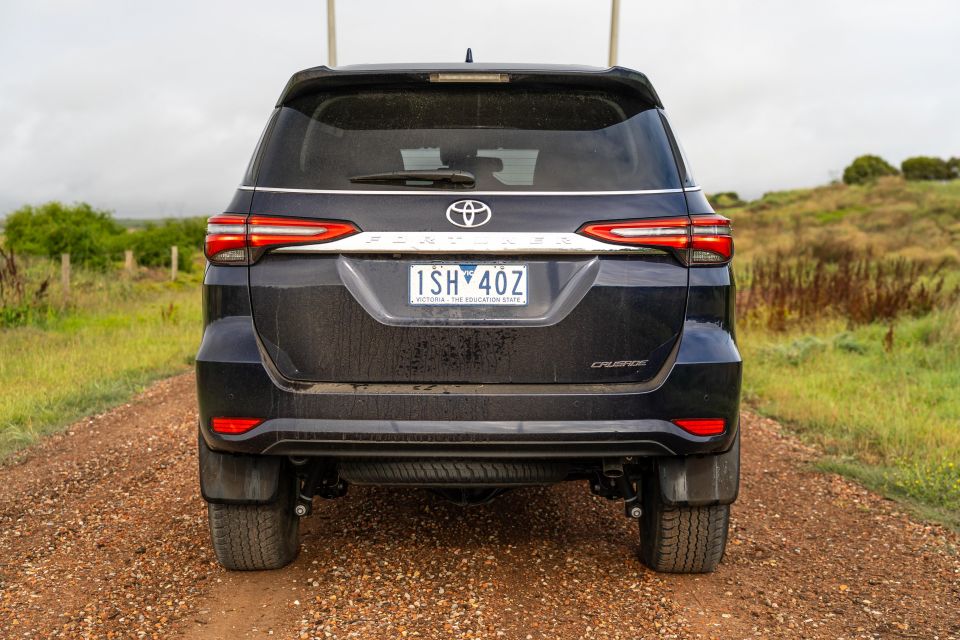
The Fortuner is covered by a five-year, unlimited-kilometre warranty.
Toyota extends this to seven years “if your vehicle is properly serviced and maintained as per the vehicle’s warranty and service book”.
The first six services are capped at an affordable $250 per dealer visit, however the intervals are shorter than various competitors at six months or 10,000km – whichever comes first.
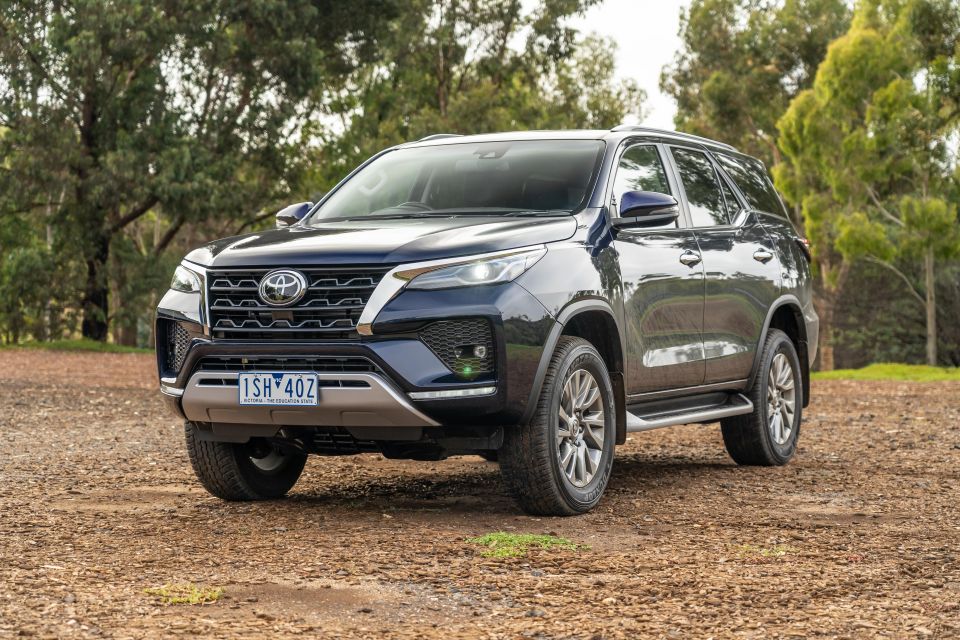
Buy your new car without the stress. It's fast, simple and completely free.

Great service from Travis and team, second time I have used this business would not hesitate to recommend them to anyone
Craig C.
Purchased a Ford Ranger in Sunshine Coast, QLD
CarExpert helped Craig save $7,224 on his Ford Ranger, now let us save you on your next new car.
Get your BEST priceCredit where it’s due: the 2021 updates clearly make the Fortuner a better vehicle, even if it still looks more or less the same.
You can expect this ‘HiLux SUV’ to offer a solidly-made interior with improved infotainment, 500Nm of diesel pulling power, and genuine body-on-frame 4×4 credentials.
That said, I’m not sure the Fortuner Crusade is the one to go for. Its price point makes it appreciably pricier than flagship versions of the Pajero Sport or MU-X, and within touching distance of the superior Prado.
Just stick with the Fortuner GXL if you’re keen on the car.
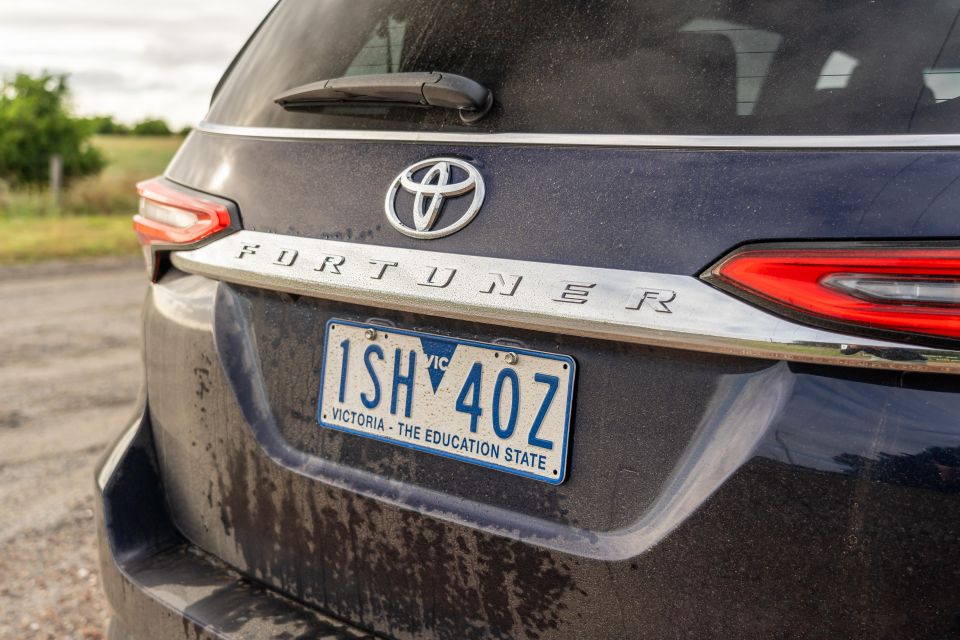
Click the images for the full gallery
Where expert car reviews meet expert car buying – CarExpert gives you trusted advice, personalised service and real savings on your next new car.


Max Davies
6 Days Ago


James Wong
4 Days Ago


James Wong
4 Days Ago


Max Davies
3 Days Ago


Josh Nevett
1 Day Ago


Max Davies
1 Day Ago